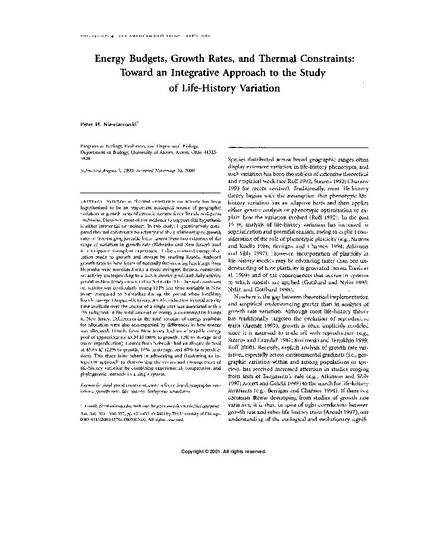
Variation in thermal constraints on activity has been hypothesized to be an important ecological source of geographic variation in growth rates of juvenile eastern fence lizards Sceloporus undulatus. However, most of the evidence to support this hypothesis is either inferential or indirect. In this study, I quantitatively compared thermal constraints on activity and their relationship to growth rates of free-ranging juvenile fence lizards from two extremes of the range of variation in growth rate (Nebraska and New Jersey) used in a reciprocal transplant experiment. I also examined energy allocation made to growth and storage by yearling lizards. Reduced growth rates in New Jersey of normally fast-growing hatchlings from Nebraska were associated with a more stringent thermal constraint on activity corresponding to a 2-3-h shorter predicted daily activity period in New Jersey compared to Nebraska. The thermal constraint on activity was particularly strong (24% less time available in New Jersey compared to Nebraska) during the period when hatchling lizards emerge (August-October). An 8% reduction in total activity lime available over the course of a single year was associated with a 7% reduction in the total amount of energy accumulated by lizards in New Jersey. Differences in the total amount of energy available for allocation were also accompanied by differences in how energy was allocated. Lizards from New Jersey had an allocatable energy pool of approximately 40.34 kJ (88% to growth, 12% to storage, and 0% to reproduction). Lizards from Nebraska had an allocatable pool of 43.44 kJ (22% to growth, 18% to storage, and 60% to reproduction). This study joins others in advocating and illustrating an integrative approach to determining the causes and consequences of life-history variation by combining experimental, comparative, and phylogenetic methods in a single system.
Available at: http://works.bepress.com/peter_niewiarowski/4/
